An early 14th century fillet and veil, based on an Italian fresco.
The winner of my Hat Prize for Rowany Festival 2017 requested an early 14th century fillet and veil, to go with her planned higher class gown.
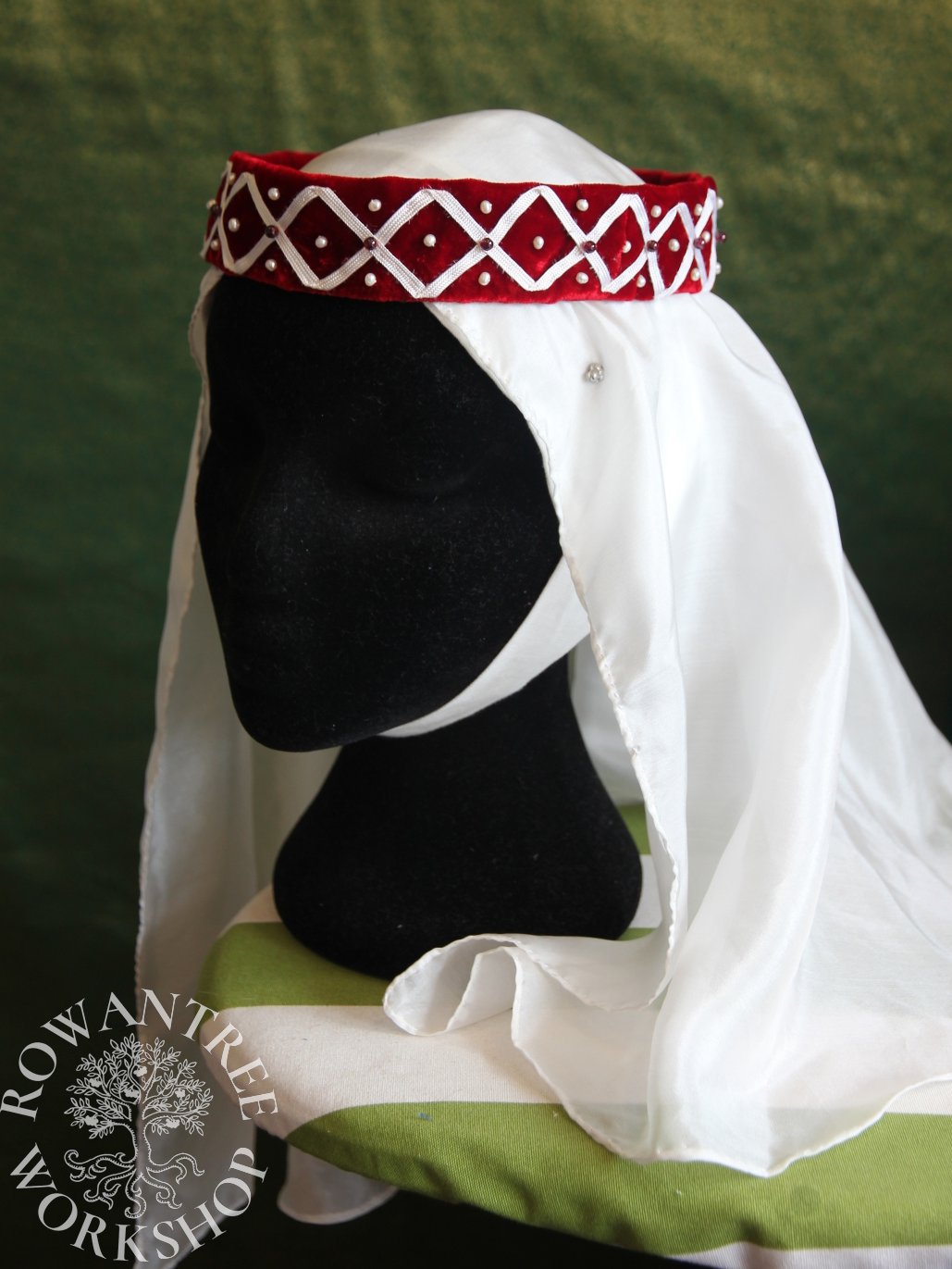
Research and Design
After some initial discussions about early 14th century French headwear, Imogen asked for a fillet based on the one worn by a dancer in the Italian fresco, The Allegory of Good and Bad Government, painted in Siena’s Palazo Publico in 1338-39.
In this image, the fillet was worn with the hair dressed back, but not uncovered. There are many related images of women wearing decorated fillets alone or with veils – it was a fashion worn across western Europe at the time, especially by well off women.
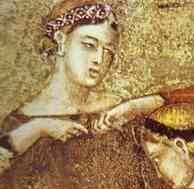
Source: Wikimedia
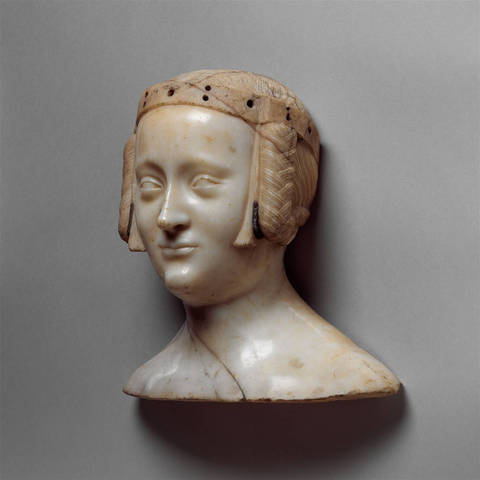
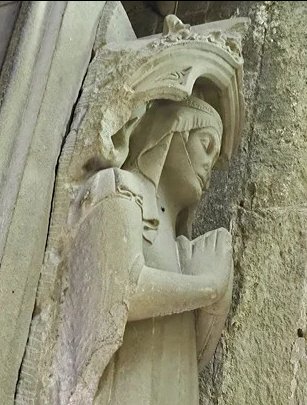
Source: Britain Express
Imogen had requested that the fillet be made in red and white, and of rich materials. Velvet weaving in Lucca, Tuscany can be documented to 1311 or earlier (Monnas 2012), so this seemed a suitably rich base.
Construction
I padded up my headform to the right size, then made a simple ring of light card to pattern the right diameter and height.
I cut a base in canvas, and basted on a layer of red silk velvet, then sewed the back seam. I basted lines to show the final width, then divided the circumference into 16. I laid the braid on and basted it, folding over at the margin. Working on the velvet pile is always tricky, so basting is essential.
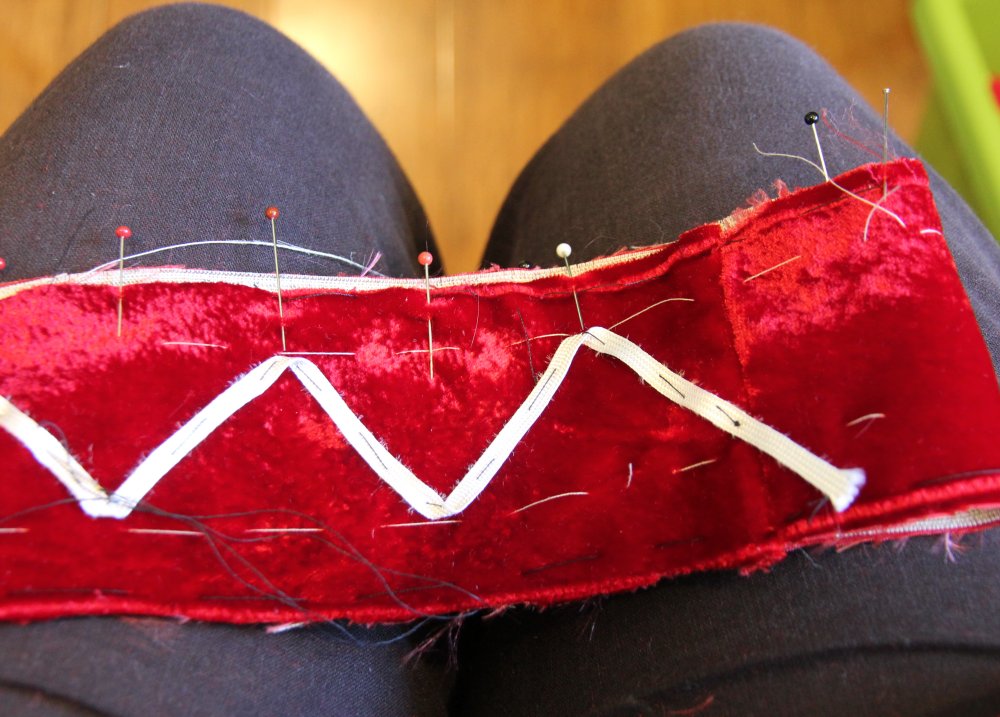
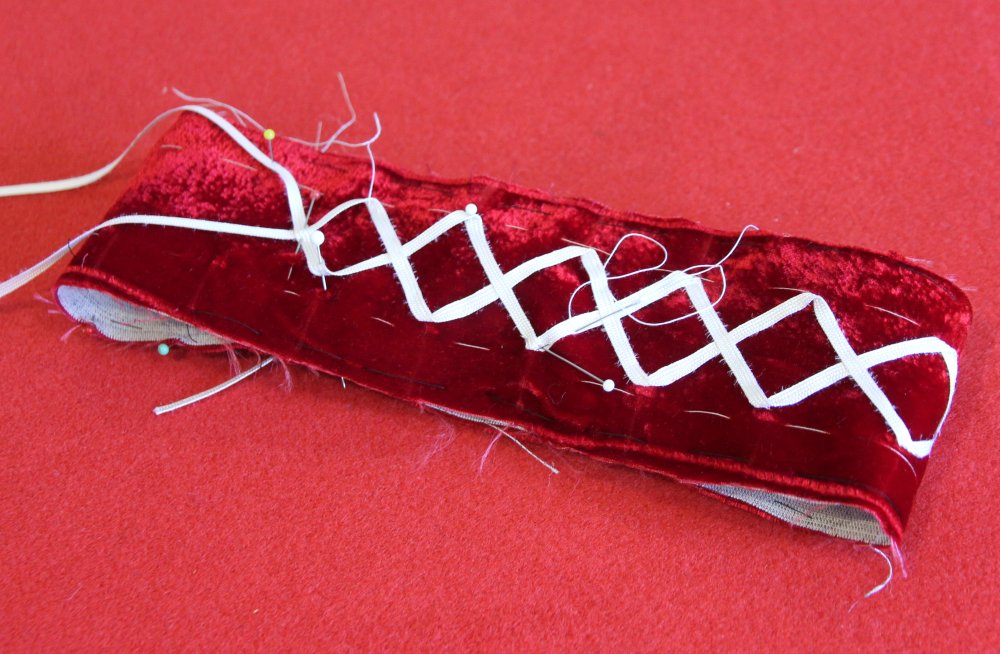
Silk braid would have been ideal, but I could not find anything suitable, so I substituted rayon. I couched the braid on, sewing down both sides, then added the cultured pearls and garnets. Then I turned the edges inside and basted the them together. Finally, I lined the fillet with red silk, slip-stitching this to the velvet.
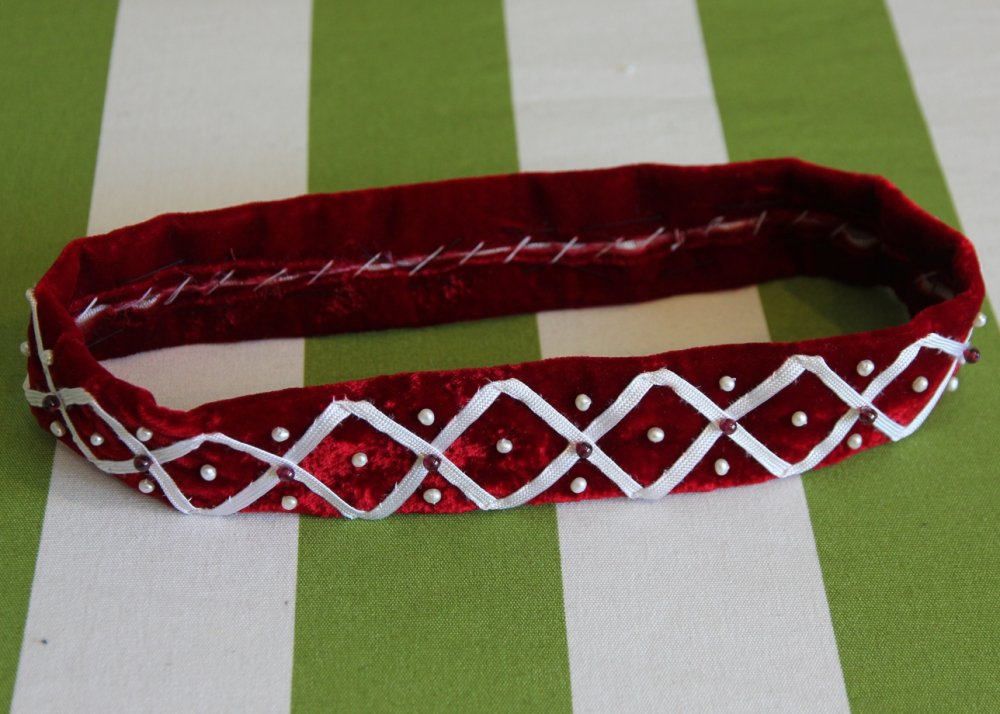
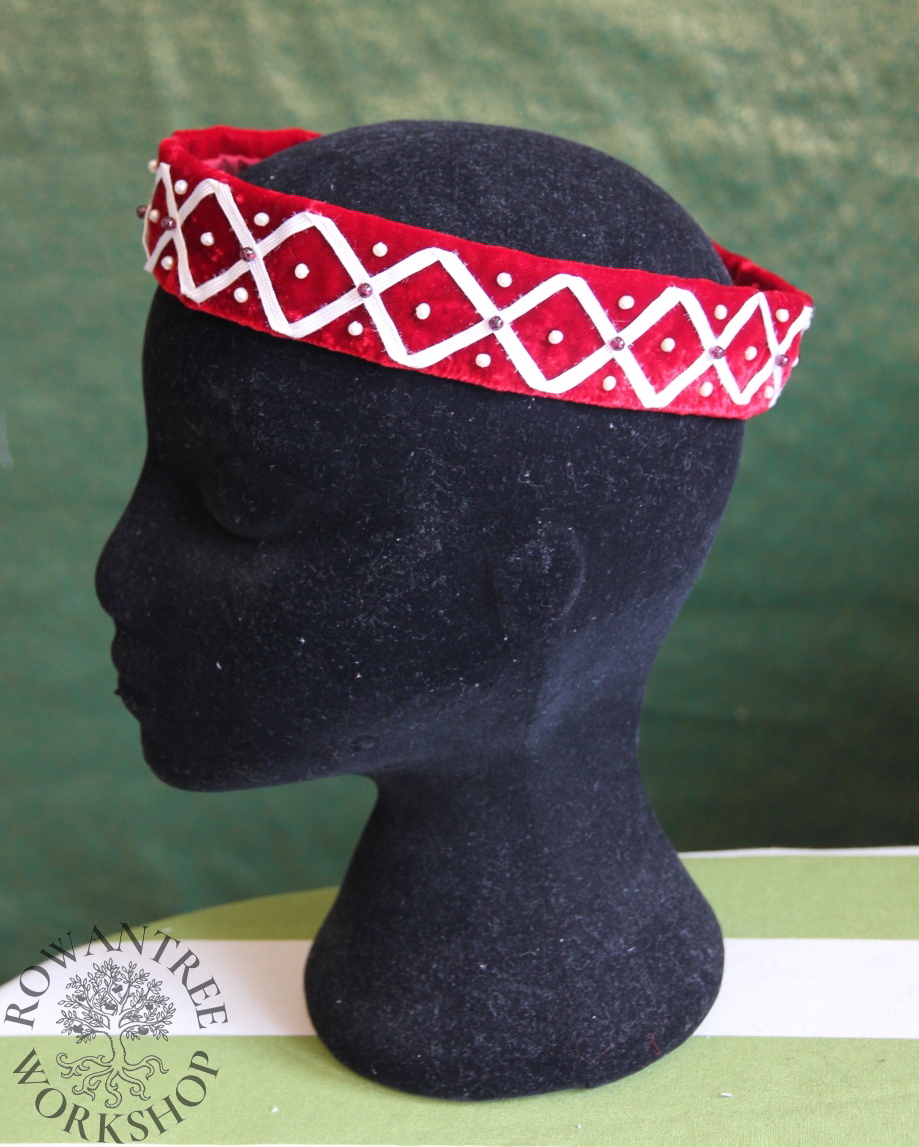
Imogen had asked for a silk veil, rather than a linen one. Silk is tricky to work with, because it is so fluid, so I cheated on technique.
I marked out a semicircular veil on the fine silk and then sewed around it by machine using a small stitch length, being careful not to distort the fabric on the bias. Then I cut it out and hand hemmed it, using a fine rolled hem. The machine stitches stabilise the fabric and make this much easier!
I made a simple barbette in linen, with a fine hem, to pin over the head under the fillet. It can be worn alone with the fillet, or with the veil.
Still hoping to get a picture of her wearing it…

